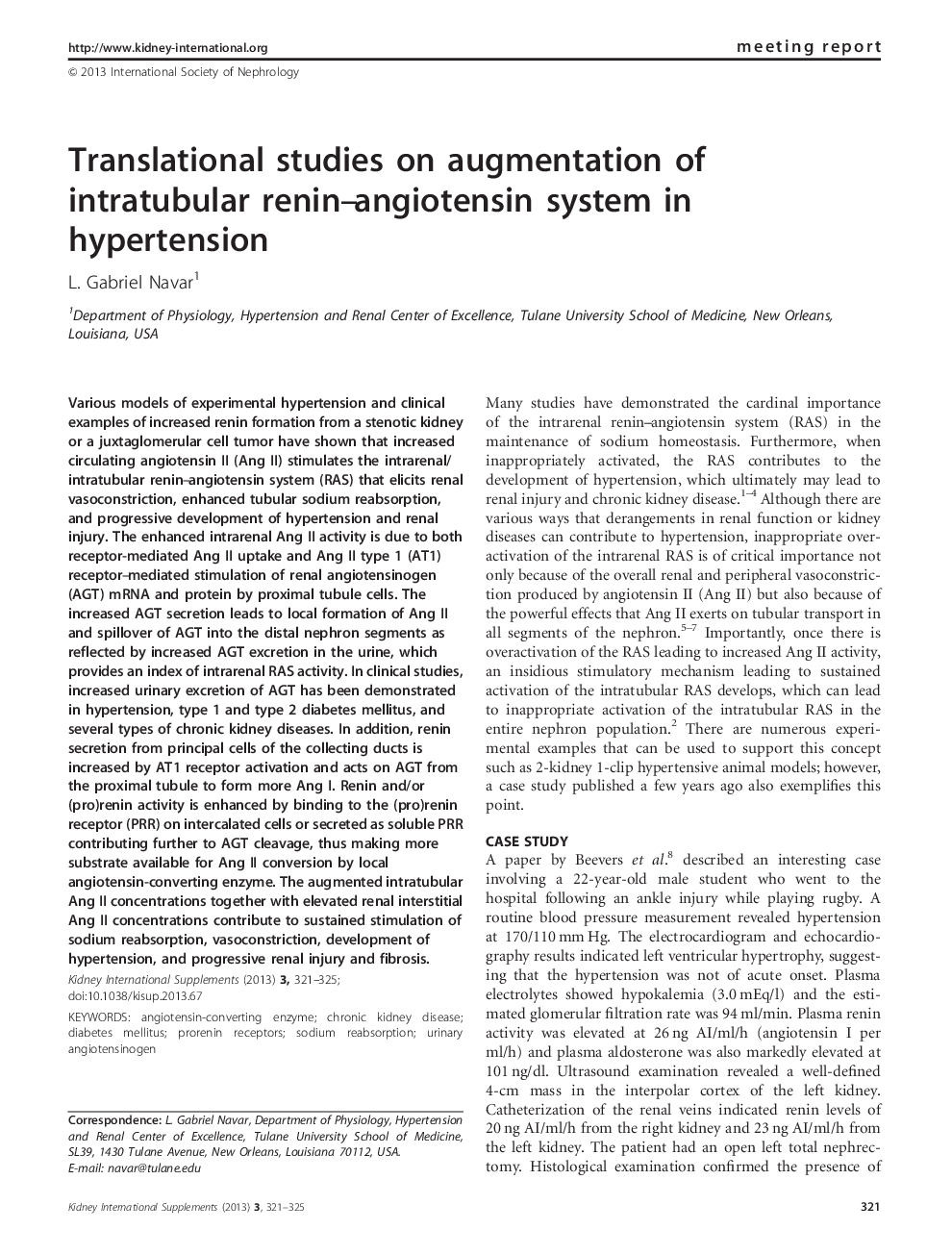| Article ID | Journal | Published Year | Pages | File Type |
|---|---|---|---|---|
| 3890687 | Kidney International Supplements | 2013 | 5 Pages |
Various models of experimental hypertension and clinical examples of increased renin formation from a stenotic kidney or a juxtaglomerular cell tumor have shown that increased circulating angiotensin II (Ang II) stimulates the intrarenal/intratubular renin–angiotensin system (RAS) that elicits renal vasoconstriction, enhanced tubular sodium reabsorption, and progressive development of hypertension and renal injury. The enhanced intrarenal Ang II activity is due to both receptor-mediated Ang II uptake and Ang II type 1 (AT1) receptor–mediated stimulation of renal angiotensinogen (AGT) mRNA and protein by proximal tubule cells. The increased AGT secretion leads to local formation of Ang II and spillover of AGT into the distal nephron segments as reflected by increased AGT excretion in the urine, which provides an index of intrarenal RAS activity. In clinical studies, increased urinary excretion of AGT has been demonstrated in hypertension, type 1 and type 2 diabetes mellitus, and several types of chronic kidney diseases. In addition, renin secretion from principal cells of the collecting ducts is increased by AT1 receptor activation and acts on AGT from the proximal tubule to form more Ang I. Renin and/or (pro)renin activity is enhanced by binding to the (pro)renin receptor (PRR) on intercalated cells or secreted as soluble PRR contributing further to AGT cleavage, thus making more substrate available for Ang II conversion by local angiotensin-converting enzyme. The augmented intratubular Ang II concentrations together with elevated renal interstitial Ang II concentrations contribute to sustained stimulation of sodium reabsorption, vasoconstriction, development of hypertension, and progressive renal injury and fibrosis.
